Koi Parasite Identification
Flukes
Flukes are a common microscopic parasite to all fish species, including our Koi and goldfish, and I would consider them to be one of the top culprits of ill health or death of our pets. Some of the most common symptoms exhibited by the fish that would lead to suspecting a fluke infestation would include the following:
- Sitting on the bottom and possibly with fins clamped tightly to body
- Flashing
- Jumping
- Fin Twitching
- Excess slime on skin
See Koi Symptom Diagnosis for in-depth descriptions of these symptoms.
The two primary groups are the skin fluke (Gyrodactylus) and the gill fluke (Dactylogyrus). Even though they are referred to as skin and gill flukes, either class can be found anywhere on a given host fish, and for this reason I personally do not refer to them as skin or gill flukes, just flukes. Each group or class of fluke has many different species, but as the symptoms and treatments are generally the same, this is not very relevant in our discussion.
In general and on average, either class will have a life span from two weeks to one month. However, depending on the water temperature, they can live as long as eight months or so in colder water due to a slower metabolic rate. The warmer the water above about 55 degrees Fahrenheit, the metabolism increases, and therefore the life span decreases. It is during these warmer temperatures that they are most active and cause the most problems for the fish.
Both classes of flukes are very prolific and can very quickly overpopulate a given host. This life span and reproductive rate is a very critical point, as it dictates the treatment protocol needed to eradicate them thoroughly. You must have a good understanding of their life cycle to properly spread the dosing or do multiple treatments to cover all stages of their life cycle.
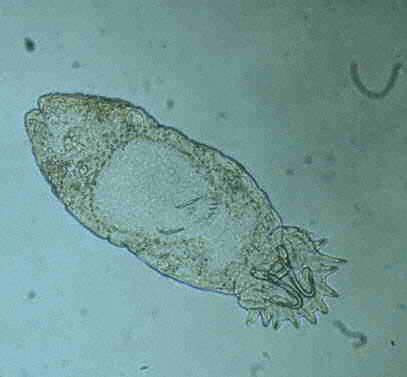
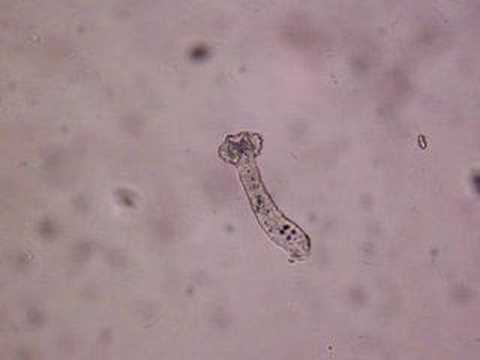
Dactylogyrus (Gill Flukes)
This class of fluke is an egg layer and is capable of putting out up to two dozen eggs per hour. Again, water temperature plays an important role here as the reproductive rate increases in warmer water and decreases in colder water. The same holds true for the time it takes the eggs to hatch. Hatching in warmer water can take as little as four days, and in colder water it can take as long as thirty days. This is a very important fact to remember, as most treatments will not kill the eggs, and they can hatch even after treatment and re-infect the fish. Most treatments that are commonly utilized will not kill the eggs, and for this reason either the initial treatment has to stay active for at least four days, or you must do another treatment immediately following the first.
Most of the problems and symptoms caused by flukes occur in warmer temperatures, and therefore the treatments usually only need to cover the shorter hatching times of four to eight days. This is totally dependent on the treatment utilized. We will discuss exact treatment protocols and treatment chemicals in another section, and in more detail.
As seen on the photos above, and with the aid of a microscope, the Dactylogyrus can be identified and differentiated from the Gyrodactylus, by the four eyes shown. Also under the scope they can usually be seen wriggling around like a worm and are easily spotted when alive and active. We will discuss the proper use of a microscope in another section as well.
Gyrodactylus (Skin Flukes)
This class of fluke reproduces live young as opposed to laying eggs. Being hermaphrodites, ALL of the adults are capable of producing young, and each one will carry a single larval young in its abdomen. On top of this, each of those unborn young is also developing a baby in their abdomen before they are even born, and in as little as one day after being born, those young can also give birth. So as you can see, they are very prolific, and one individual is capable of reproducing into the thousands in a month or so.
With this class of fluke, most of the common treatments utilized to date only kill the adult. Believe it or not, the young can still be born from the dead parent! Again, knowing these facts are crucial in picking the proper treatment and treatment protocol. You must utilize a treatment or consecutive treatments that will kill the adult as well as cover the gestation period of the young inside the dead adult. The gestation time can take about five days, so this means that once you kill the adult, the young can be born five days later and re-infect the fish. So it is important to choose a treatment to cover this time frame or to do consecutive treatments as a safeguard. This is all totally dependant on the medications/chemicals utilized.
Due to the nature of the fluke and their biological construction, they can be difficult to kill. You must utilize specific types of chemicals/medications/treatments that are designed to eradicate them specifically. Some of the more common products are Praziquantel, organophosphates such as Fluke Tabs, and Supaverm. Supaverm, however, should not be used if you have goldfish in with Koi to be treated, as it will kill the goldfish.
I prefer Fluke Tabs and Praziquantel, and you can find exact treatment protocols for these products in the Koi First Aid section. They will be under the sub-heading of “Treatments”
Trichodina
Trichodina is one of the most common parasites of Koi and will be found anywhere in the world. They are not considered true parasites by some because they do not require a host fish to survive and reproduce as most fish parasite do. They can quite often be found on most Koi in low numbers but not sufficient to cause the fish any problems or symptoms. However, when they do become a heavy infestation they can cause a number of symptoms such as flashing. jumping, fin clamping and twithching, redness, spider veining, as well as a few others. They can also open the door for secondary bacterial infections, and this is a very common occurance when they reach higher infestations and are left untreated.
Trichodina are fairly easily seen under a microscope, both by their physical appearance, and their unusual saucer-like gyrations of movements all over the place on the slide. They are very quick in some cases and difficult to keep in the frame of view. They are easily treated with a number of treatments on the market. I prefer to use a formalin/malachite green solution such as ProForm C or I also like to use PP (pottassium permanganate). With either chemical I prefer to do a series of three milder solutions as oppossed to one strong one. It is always easier on the fish to use the weaker solutions.
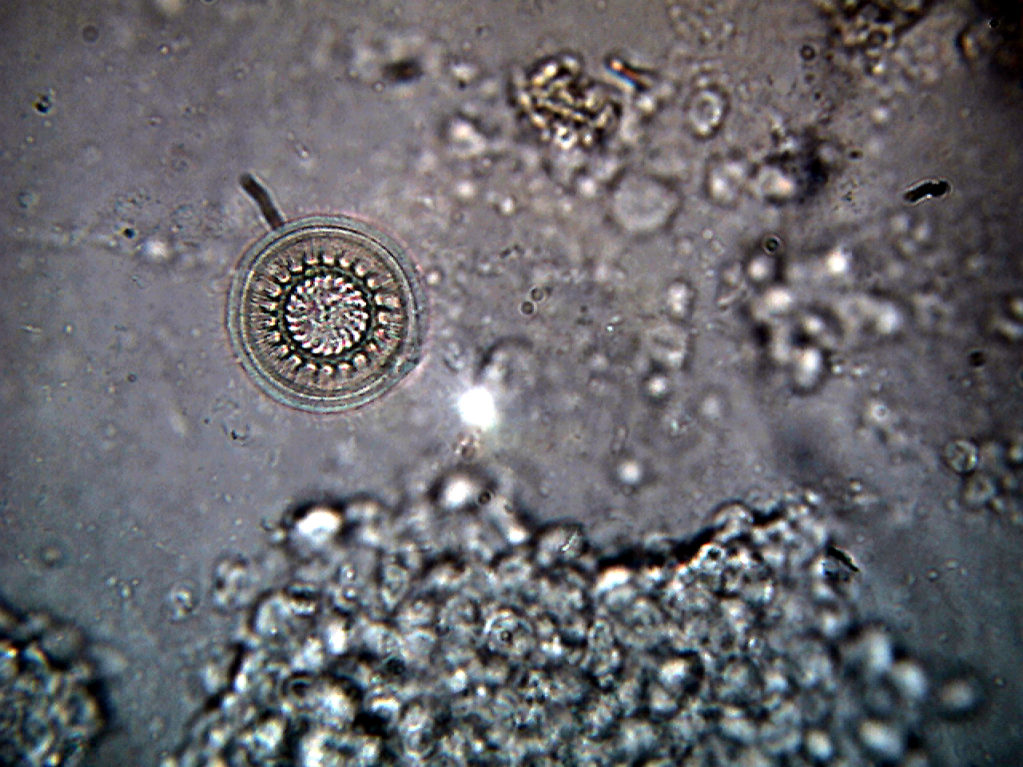
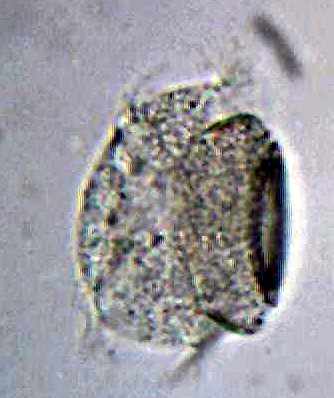
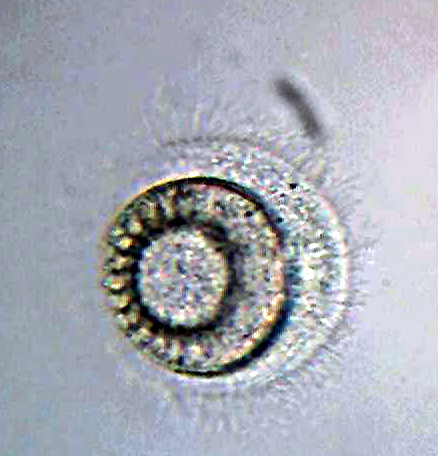
More Parasite Profiles Coming Soon
Written by John Fornaro, Hanover Koi Farms. ALL RIGHTS RESERVED BY HANOVER KOI FARMS, COPYRIGHT © 2017